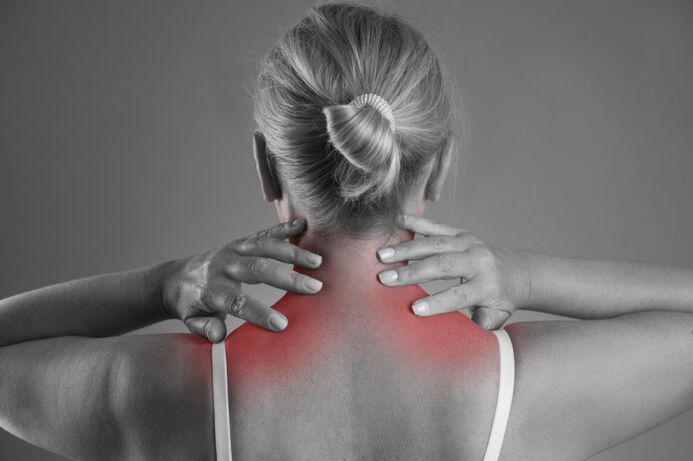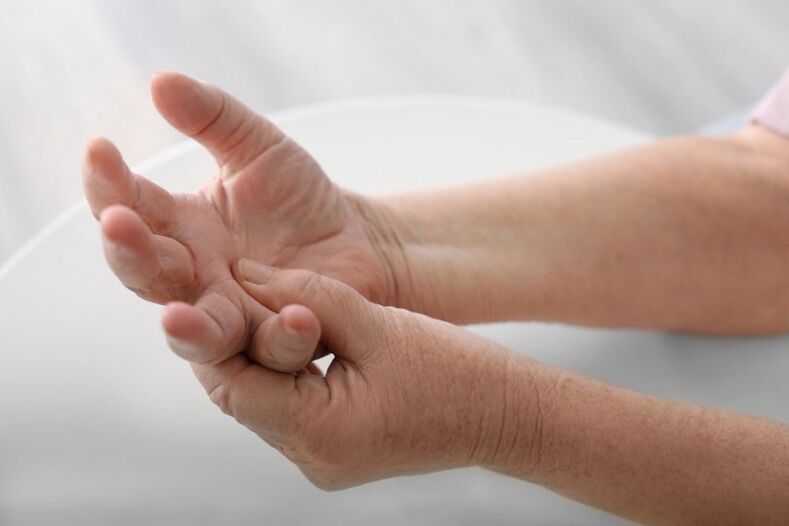
The life of a modern person is associated with constant overloads to which the spine is exposed. And if in the past diseases of this important organ were found mainly in mature and elderly people, today, according to medical statistics, the younger generation is experiencing such problems more and more often. The leader in this disease groupcervical osteochondrosis(SHOOH). This pathology causes a lot of discomfort to a person.
Therefore, it is worth knowing the reasons for its appearance and the methods of treatment.
What is cervical osteochondrosis
For a long time, most people try not to notice the unpleasant discomfort in the neck area, referring to the usual overload and fatigue. But over time, when you move your head, the pain causes discomfort and other unpleasant symptoms appear. And only when the situation becomes critical does a person seek medical help and find out that he or she is suffering from cervical osteochondrosis.
This disease affects both sexes equally often. As already mentioned, it is often found today in very young people under the age of 30. This phenomenon is largely due to the introduction of computer technologies in all walks of life. People simply stop moving and spend most of their time chained to the monitor. As a result, pathological changes begin in the cervical spine: the vertebrae move and the cartilage tissue between them, which represents a kind of layer, becomes thinner. In other words, connective tissue overgrowth occurs when formations appear in the vertebral body in the form of growths.
The consequence of such pathological lesions is a reduction in the effect of shock absorption between the vertebrae, the frictional surfaces in contact with each other cause friction and compress nearby nerves and blood vessels. All of these pathological changes lead to a deterioration in the blood supply to the back of the brain, leading to a deterioration in general well-being and pain. If the problem is not treated in time, the disease progresses and in severe cases can even lead to disability.
Causes of cervical osteochondrosis
Not so long ago, the main causes of SHOC were always related to age-related changes in the body. But in the reality of modern life, factors have emerged that increase the risk of developing pathology at a younger age.
Some of these reasons are:
- sedentary lifestyle;
- forced stay in one position (usually sitting);
- overweight;
- autoimmune disease;
- checkers;
- stressful situations;
- injuries to the neck or occipital region;
- congenital disorders of the spine;
- violation of metabolic processes.
In some cases, the disease is caused by hormonal disorders or adverse heredity.
Symptoms of cervical osteochondrosis
In contrast to pathological processes in other parts of the spine, SHOX is more pronounced. This property is explained by the fact that the vertebrae in the cervical spine are very close to each other, so the height of the intervertebral plates is small. This anatomical feature contributes more than in other parts of the spine to the compression of nerve tissue and blood vessels. Therefore, the main symptoms of the disease are localized in the upper back, neck region and head.
In this case, patients present the following complaints:
- restricting neck mobility, especially if you want to turn your head;
- intense pain, which often does not allow a person to perform a basic operation (bending, turning the head);
- characteristic crackling while moving;
- decreased sensitivity in the hands;
- impaired coordination of movements;
- dizziness;
- general weakness;
- decreased vision and hearing, tactile sensitivity or taste perception.
Because the cervical spine consists of eight vertebrae, depending on the location of the dystrophic lesion, the disease has its own characteristic signs. Usually, in these classes, compression of the roots of the spine results in a disorder of sensitivity or restriction of movement. Therefore, cervical osteochondrosis is distinguished by radical symptoms, i. e. , which vertebra is involved in the pathological process.

Symptoms of cervical osteochondrosis may include:
- the first vertebra - sensitivity decreases and numbness of the occipital region and neck is observed;
- the second - pain in the back of the head and in the parietal region;
- third - pain in the part of the neck where the root is pinched, speech and taste perception are also impaired;
- fourth - pain radiating to the shoulder, under the shoulder blade, respiratory disorders are observed;
- fifth - pain in the neck, radiating towards the shoulder;
- sixth - neck pain extends to the forearm and thumb of the hand;
- seventh - pain radiating to the shoulder blade, back shoulder, forearm and fingers;
- eighth - the pain extends from the neck to the shoulders and further from the arm to the little fingers.
It should be noted here that the diagnosis pays special attention to the extent of the lesion. Because this criterion determines the extent of osteochondrosis of the cervix. There are only four of them and they determine the severity of the pathological process.
Diagnosis of the disease
It should be noted that an experienced physician can easily diagnose osteochondrosis of the cervical spine during the initial examination, focusing only on the typical clinical symptoms. But to determine the extent of the damage and the incidence of the pathology, the patient must undergo a number of tests.Basically, these are all hardware research methods. Diagnosis of cervical osteochondrosis includes:
- Radiographic examination of the cervical spine. During the diagnosis, the extent, location, salt deposits, and characteristics of the location of the vertebrae are determined.
- Computed tomography - allows the detection of possible fractures, the actual height of the intervertebral discs, the location of nerve tissue and spinal cord compression, if any.
- MRI (magnetic resonance imaging) - provides accurate imaging of abnormal lesions. Thanks to this type of test, the condition of the nerve fibers as well as the intensity of blood flow can be accurately determined.
Most often, one of the listed tests is sufficient for diagnosis. In most cases, doctors use a technique that has been proven for decades, namely x-rays.
Why is cervical osteochondrosis dangerous?
Any pathology of the spine is fraught with serious problems. After all, the spine is a kind of foundation on which the entire structure of the human body rests. Important bloodlines pass through the neck region, supplying the brain with oxygen and nutrients. There are many nerve endings here. Therefore, violation of the innervation or blood supply to important organs poses serious consequences. And this is not an exaggeration in danger, as osteochondrosis of the cervical spine has serious consequences.

In addition to the perceived discomfort, the resulting vertebral defect leads to hearing loss and vision loss. The brain with SCH suffers from a lack of oxygen. Therefore, osteochondrosis of the cervical spine is considered to be the most dangerous form of the disease.
To confirm this, it is enough to list only the most common complications of SHOX:
- persistent high blood pressure;
- chronic migraine;
- vegetative vascular dystonia (VVD);
- breathing problems;
- various perceptual disturbances (taste, touch) that eventually take an irreversible form;
- cardiovascular pathologies, of which stroke is the most dangerous.
In advanced cases of the disease, patients develop vertebral artery syndrome and prolonged compression of nerve roots leads to radiculopathy. Changes in the structure of the vertebrae can then lead to a complete loss of neck mobility. But the most serious complication of osteochondrosis of the neck is death, which leads to compression of the spinal cord.
Given the severity of the situation and the high likelihood of complications, contact an hospital immediately if alarm symptoms occur. Such unpleasant signs may include: systematic headache, dizziness, discomfort in the neck or back of the head. After the diagnostic procedures, the doctor chooses the appropriate therapy.
The treatment of patients with SHS is usually complex. Therapy necessarily includes massage, physiotherapy, physiotherapy procedures. Of course, it is impossible to improve a patient’s condition without the use of medications.Therefore, the drug treatment complex for osteochondrosis includes:
- analgesics;
- non-steroidal anti-inflammatory drugs;
- chondroprotectors;
- muscle relaxants are devices that relieve muscle tension;
- necessarily prescribe a vitamin complex.
Each therapy is selected by a specialist, taking into account the individual characteristics of the patient. Any self-treatment of cervical osteochondrosis is unacceptable. All of these drugs are designed to localize symptoms in the acute phase of the disease. Other techniques are also relevant during remission. Treatment is usually done at home, i. e. on an outpatient basis. But in particularly severe cases, the patient is hospitalized.
Traditional treatment methods
Doctors are always willing to supplement the medicinal complex of the treatment with natural preparations based on folk recipes. Various decoctions, infusions help stop inflammation and relieve pain.

Here are some recipes for alternative treatments for osteochondrosis:
- Dill seeds (200 g) should be poured with vodka (250 ml) or alcohol half-diluted with water. After a two-week infusion, it is recommended to take one tablespoon of infusion on an empty stomach three times a day.
- Tools for external use are easy to prepare in the following order: the purple leaves (fresh) should be finely crushed, 300 ml of bran (black) should be added, and then 200 g of good honey should be added to the mass. It is necessary to stick to the composition of the whole day in a dark place. It can then be used to rub the problem area. It is recommended that you use this product after consulting your doctor. The preparation is contraindicated for those who are allergic to its ingredients.
- You can make an infusion of purple flowers for internal use. To do this, take a spoon (tablespoon) of fragrant inflorescence, pour a glass of boiling water, strain in an hour and take 1 liter three times. Art.
Important! The prescribed dose should be strictly adhered to when taking all herbal preparations.
Exercise for cervical osteochondrosis at home
It only makes sense to talk about the complex of physiotherapy with SHH after stopping the acute period. As the disease worsens, such activities can only exacerbate the situation.
All exercises in physiotherapy are aimed at maintaining normal mobility of the cervical spine. Classes are kept in a calm rhythm, no sudden movements should be made. If there are signs of fatigue or painful feelings, the clocks will stop immediately. The complex includes the following exercises that you can do regularly at home:
- When standing while inhaling, you should tilt your head so that your chin touches your chest. When exhaling, the head should be carefully retracted. The same exercise can be done freely while sitting in a chair.
- The rotating movements of the head are comfortable in any starting position. It is better to change the direction of movement regularly so that the head does not rotate. It is recommended to perform the exercise at a slow pace.
- Performing this exercise on a regular basis will help to strengthen the neck muscles perfectly: you should put your hands in a "lock" and press your foreheads on them as much as possible. To achieve a lasting effect, repeat this exercise three times for 30 seconds. You can alternately press your forehead with your palm and then apply pressure to your palm with your forehead.

There are many other effective methods, but either option can only be used after approval by your doctor.
To prevent diagnosis "cervical osteochondrosis», You should lead an active lifestyle, do regular exercises in the morning, taking care of your neck, and properly equipped for your workplace.

















































